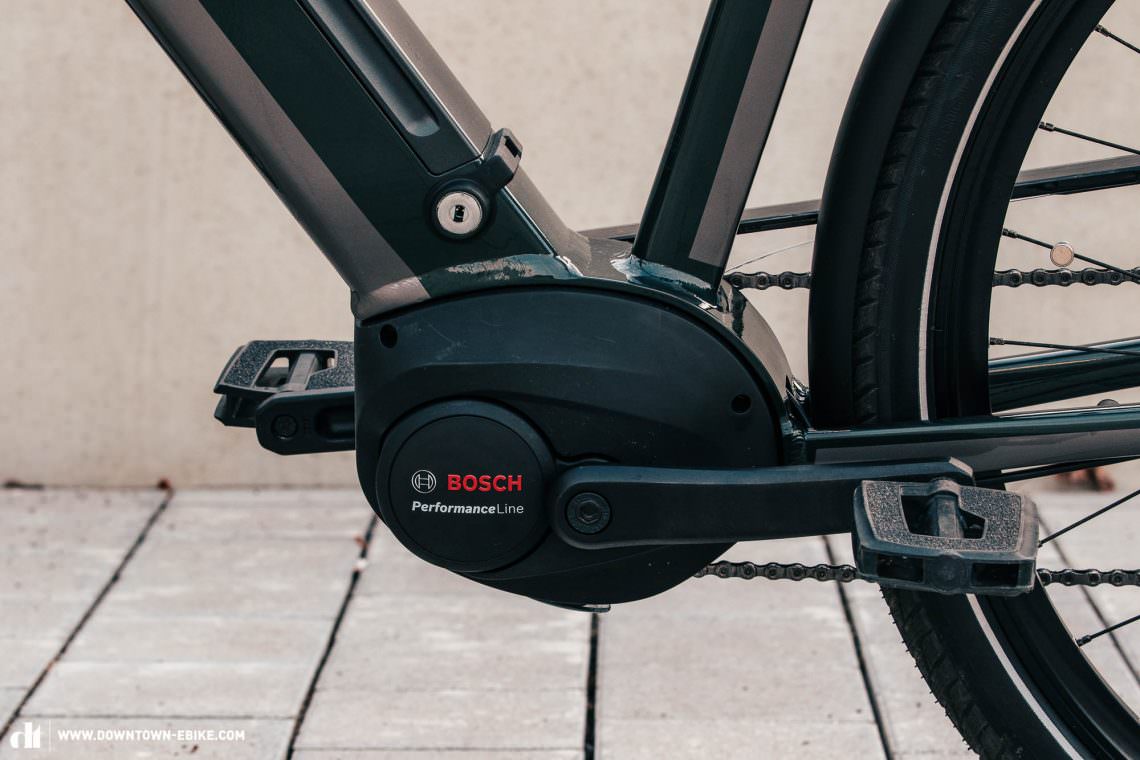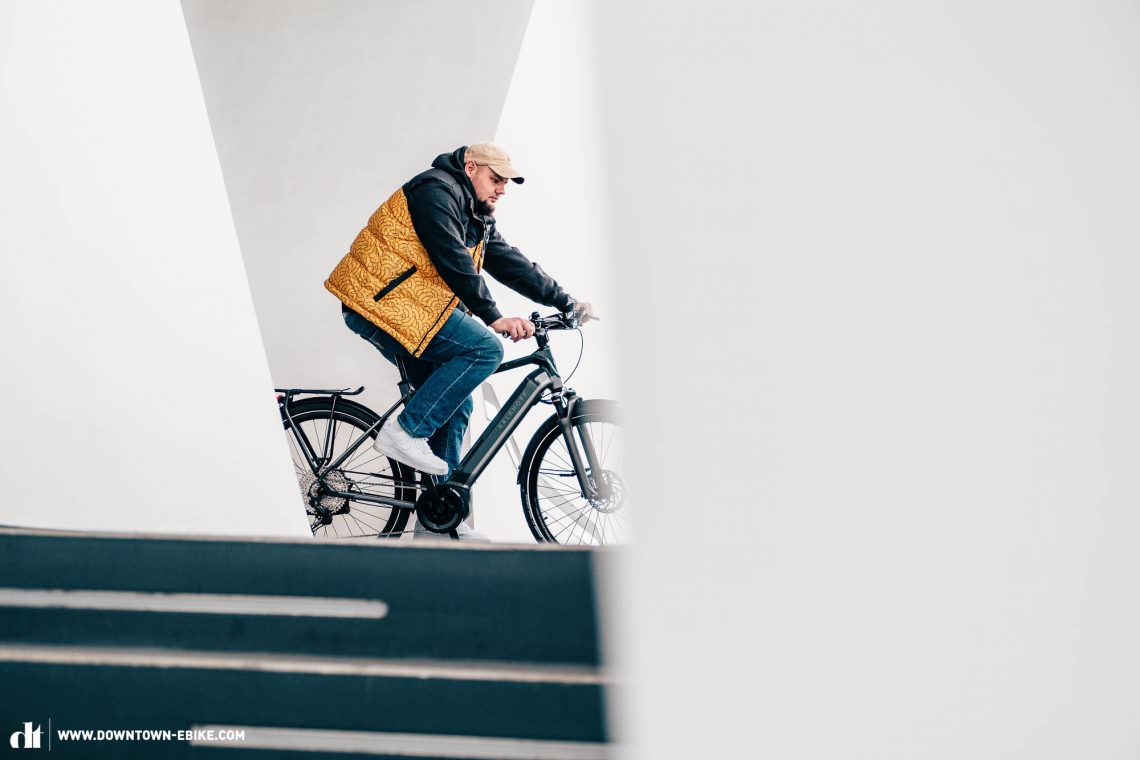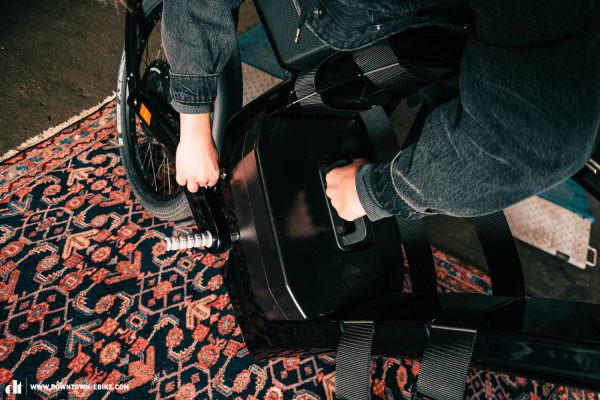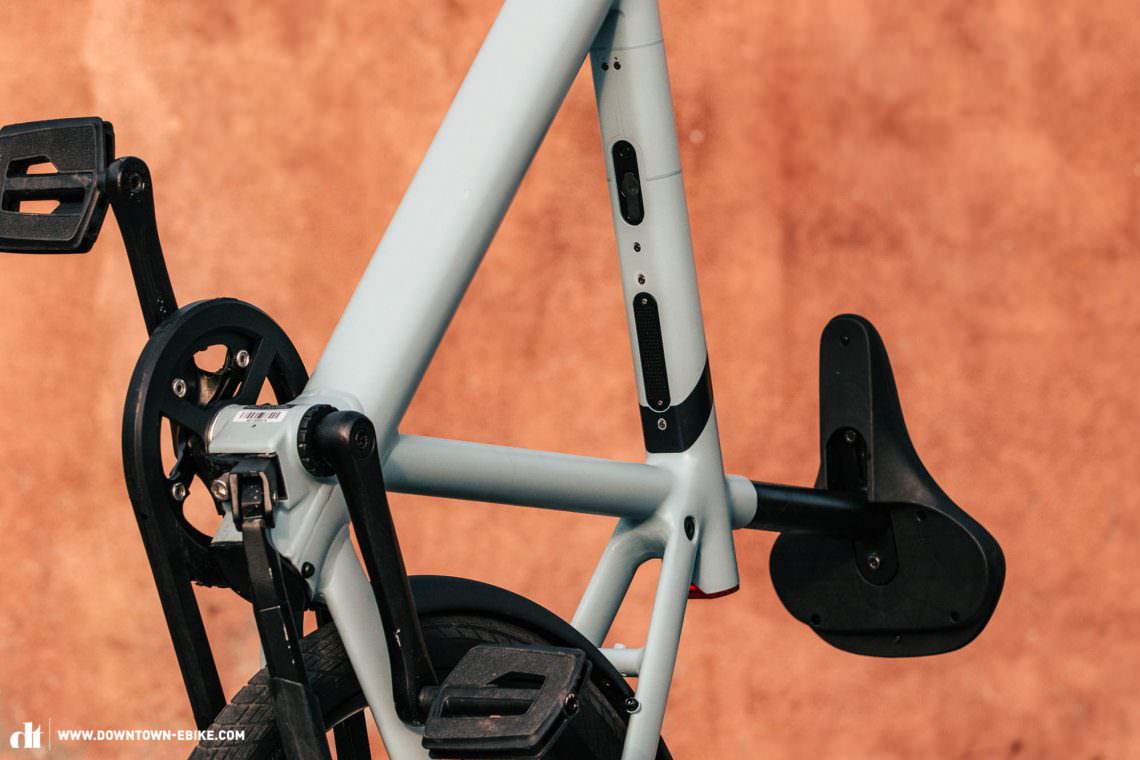The ebike is booming and has announced itself as a multifaceted option encompassing everything from S-pedelecs to E-compact bikes, E-cargo bikes and E-mopeds. But more choice also means more risk of buying the wrong ebike. We tested the 19 most exciting ebikes between € 1,785 and 10,048 in a direct comparison and found the best ebike and ebike motor 2021 for you. Read on and become an ebike expert now.
Here it is. The moment of glory for ebikes, S-pedelecs, E-compact bikes, E-cargo bikes and E-mopeds has arrived – and the bicycle industry has long seen it coming. In turn, promising slogans and marketing claims are blowing past our ears stronger than ever. Buying an ebike usually involves an investment of several thousand euros and there are huge differences between concepts, riding performance, riding safety and areas of use.

Our mega group test provides you with everything you need to know to make an informed purchase! We give you a comprehensive overview of the most important ebike concepts, tell you which ebike is the right one for which purpose, let you into important tips and tricks for practical use and warn you which stumbling blocks are best avoided. Not all ebikes are the same. Only buyers who are properly informed can make a good decision and avoid frustration with a bad investment.
Mobility is more than what happens on the way from A to B. Riding time is living time.
Before we jump in, we want to make one thing clear. We are neither preachers of automotive asceticism nor advocates of unconditional two-wheeled compulsion. We believe that there is the right tool for every job and, as befits a well-equipped toolbox, it contains several options. In the modern mobility mix, it’s all about combining these cleverly and that’s why we declare #combinism the credo of the hour. So flip up your bike stand and celebrate the new understanding of mobility with us. Riding time is living time!
Table of contents
- The fabulous variety of ebikes! Why orientation is needed
- Test field and typology – Not all ebikes are the same
- Ebike motors and battery concepts – Which motor is the best?
- Which ebike is right for me, or which ebiker type am I?
- Worauf kommt es beim E-Bike-Kauf an? Die wichtigsten Kriterien für unseren Test
- Was ist das beste E-Bike 2021?
Chapter I The fabulous variety of ebikes! Why orientation is needed
You know that feeling when you look back on a missed opportunity and say to yourself, “God damn! Why didn’t I think of that earlier!?” The bad news is that by the time you’re telling yourself this, it’s usually too late. The good news is that in terms of mobility, that moment hasn’t yet come. It remains in the future. You have the chance here and now to avoid any regret and discover a long-lasting mobility mix that suits you best and will get you to your destination in style, easily and while having fun. Ebiking opens up a world of new possibilities, is not only better for the environment but also really cool and fun. But not all ebikes are equal.


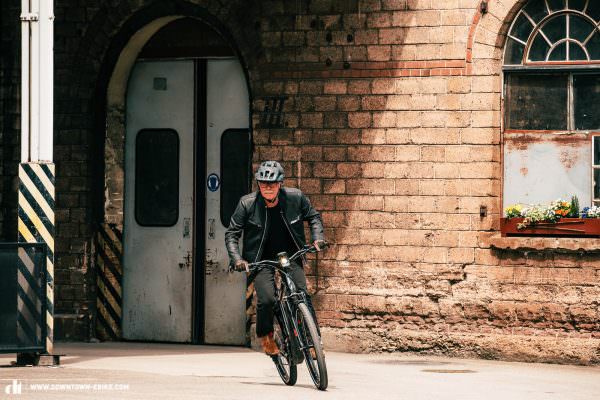

Why do you have to read this group test?
Technological progress and the triumph of the automobile have allowed us a level of individual mobility that our ancestors would never have dared to dream of. The car has become a symbol of freedom and social status, as well as a must-have for numerous generations. We probably don’t need to tell you why the automobile has served its time as a symbol of mobility – otherwise, you would hardly be reading these lines.
Ebikes are a statement: Stylish, practical and sensible

The past few months have put the spotlight on the challenges of our time. Then, something amazing happened: the ebike is becoming a lifestyle product and a mainstream phenomenon – a status symbol that is also an object of desire. Society has discovered ebikes! And with this exploding demand, clever business sharks smell opportunity. The market is becoming increasingly packed and confusing and it’s becoming clear that orientation, a market overview and buying advice based on years of E-expertise are in short supply. That’s exactly where we come in with this ultimate group test!
We didn’t come to this unprecedented group test to solve the last mile problem. We think bigger than that!
Modular mobility, last-mile, pop-up bike lanes – contemporary mobility-speak knows how to throw buzzwords around as if there were no tomorrow. We don’t let ourselves be blinded by all that and make sure that we cut through the hype. From bike beginners to experts, we welcome anyone who’s passionate about ebikes. What does a modern ebike have to be able to do? How much money do you have to spend on a good ebike? Which features are essential and which are just nice to have? What will the perfect ebike of the future look like? These are just a few of the questions to which we provide the answers below.
This much in advance: This group test has brought forth a multitude of surprising truths and answered numerous exciting questions that no group test has addressed to date. With this in mind: open your minds, hearts & wallets*, it will be fun!
*Warning: reading this group test could have a significant impact on your wallet. By reading on, you give your consent to be inspired and motivated at your own risk. Of course, we’re happy if we can help you to avoid making the wrong purchase and let you enjoy even more hours of fun on your bike!



More than a means to an end – Riding time is living time
Technological development no longer stops at physical components. Smart features here, software connectivity there. This makes it easy for considerations about ebike mobility to become mired in technical gibberish. But the question is really what your focus is as you move through everyday life in the saddle? What does the ebike offer you and what is it capable of when you give it the chance?
An (e)bike is essentially just a means of transport. But it is also so much more than that because on an ebike we can…
- be hip and stylishly mobile.
- take our everyday life closer to nature and be more active.
- discover our surroundings from a new perspective.
- meet new people and forge new friendships.
- takes our fitness and stamina to the next level.
- let ourselves be led more quickly out of everyday life and into the outdoors.
- discover new places we would never have reached otherwise.
- meditate – with every turn of the pedals, your thoughts settle.
- improve our technical understanding.
- feel more alive and enjoy life more intensely.
- feel like a better version of ourselves.

We bike in everyday life because we feel fast, proud, clever, cool, adventurous, alive, fit or simply good about ourselves! Ebikes are tools that can enhance these feelings or help create them in the first place. If you understand this, you also understand the scope of the ebike, what it can mean for our lives and what should be the centre of our attention! Because ultimately, mobility is more than what happens between the starting point and your destination. Riding time is living time.
Chapter II Test field and typology – Not all ebikes are the same
We use ebike as a catch-all in everyday language, so we want to give you an overview of the most important types of bikes here. It’s important to note that the models available on the market cannot always be clearly classified into one or the other category and that there are significant overlaps. It’s also important to bear in mind that a certain type of ebike may suit the different needs of a certain type of biker and vice versa. To say that short-distance riders are always and without exception best advised with an E-compact bike would be too simplistic. We’ll explain what makes up the individual rider types later, but for now, we’ll talk about the bikes:
E-compact bike – Small but mighty!

E-compact bikes usually have a wheel size between 14″ and 24″ and have a comparatively short wheelbase. The frame, which is often low-slung, makes it easy to get on the bike, while the long seat post and fork steerer allow for a relaxed riding position. In our test, both the Movea Modo 20″ and the VanMoof X3 are representatives of this bike type. This category also includes folding bikes, like the Brompton, which can be folded down to a very compact size for transport or storage with the help of one or more hinges on the frame.
Pedelec – Or the typical ebike

Pedelecs (or pedal electric cycles) are the type of bike most of us mean when we talk about an ebike. By definition, these are bicycles with pedal assistance up to 25 km/h and the nominal motor power limited to a maximum of 250 W. This type of bike exhibits by far the most variety and ranges from test bikes like the superlight Schindelhauer Arthur VI/IX with its rear hub motor, to the Cannondale Topstone Neo Carbon Lefty LE with drop bars, to the full-suspension Moustache Samedi 27 Xroad FS 7 with its mountain bike look. If you want it more confusingly: all bike types except S-pedelecs and E-mopeds are basically just variants of the pedelec. #mindblown
Not all ebikes are the same! There is an unbelievable range of subcategories that are all lumped together as “ebike” in everyday language.
S-pedelec – The fast ebike

With support up to 45 km/h and continuous motor output of up to 500 W, S-pedelecs or high-speed ebikes require a licence plate and insurance. In addition, they require at least a moped, motorbike or driving licence.
E-moped – Full throttle on the accelerator

Most E-mopeds on the market are class L1e mopeds, which, like S-pedelecs, provide support up to speeds of 45 km/h. As such, they are also subject to the same registration and insurance requirements. In addition, there are also E-scooters or electric scooters that can reach a speed of 80 km/h. No matter how fast they get, an E-scooter doesn’t require any pedalling, getting up to speed with a throttle instead. To drive them, you need at least a class M license from the age of 16, or a B class license, and a helmet that conforms to ECE 22. They are also subject to restrictions regarding the use of cycling infrastructure – cycle paths, as well as forest roads, are usually a no-go. What speaks in favour of E-mopeds compared to their petrol-fuelled counterparts are the low noise, lack of exhaust fumes and basically non-existent wear and tear during regular for short-distance use. On the other hand, their price can be higher, the charging time is longer than just filling a tank and the range is shorter.
E-cargo bike – The pack mule with E-support

Not all cargo bikes are the same. There are many different cargo bike concepts for transporting loads effectively, safely and comfortably, with three main types available for private users. For commercial applications, there are also two-track heavy-duty cargo bikes with a large loading bay at the back or front, as well as trailer solutions like the CARLA CARGO or the BicyLift Trailer by FlexiModal for transporting very large objects – for example, cargo bikes themselves.

There are big differences between the various types of (E-)cargo bikes in terms of centre of gravity, riding stability, usability and effort required for loading. Depending on the design, models can be used more universally or for specific tasks, and ride better or noticeably worse when loaded up. Cargo bikes share some common characteristics, but in the end, what you get depends on how the manufacturer has designed its models and implemented the overall concept. That’s why it’s worth reading our group test of the 9 most important and exciting cargo bike concepts (read the article), where we present the individual strengths and weaknesses of the most important models.
Now you know the differences between the individual ebike types – freshly crowned experts! In future, when we generalise and refer to ebikes in our texts for the sake of brevity, you will now know which subgroups there are and be able to differentiate between them.



The best ebike for ladies and the perfect ebike for men
“There’s a clear distinction between ebikes for women and ebikes for men!” Wrong! The traditional distinction in frame shape, which is based solely on the gender of the rider, is passé. When designing modern ebikes, innovative brands focus on the needs of the target group and don’t differentiate between male and female. Since different types of ebikers have different requirements, some frame shapes are better suited than others. We will come to the definition of ebike types later, but we’ll briefly explain the three classic frame shapes here.
The absolute classic – Diamond frame
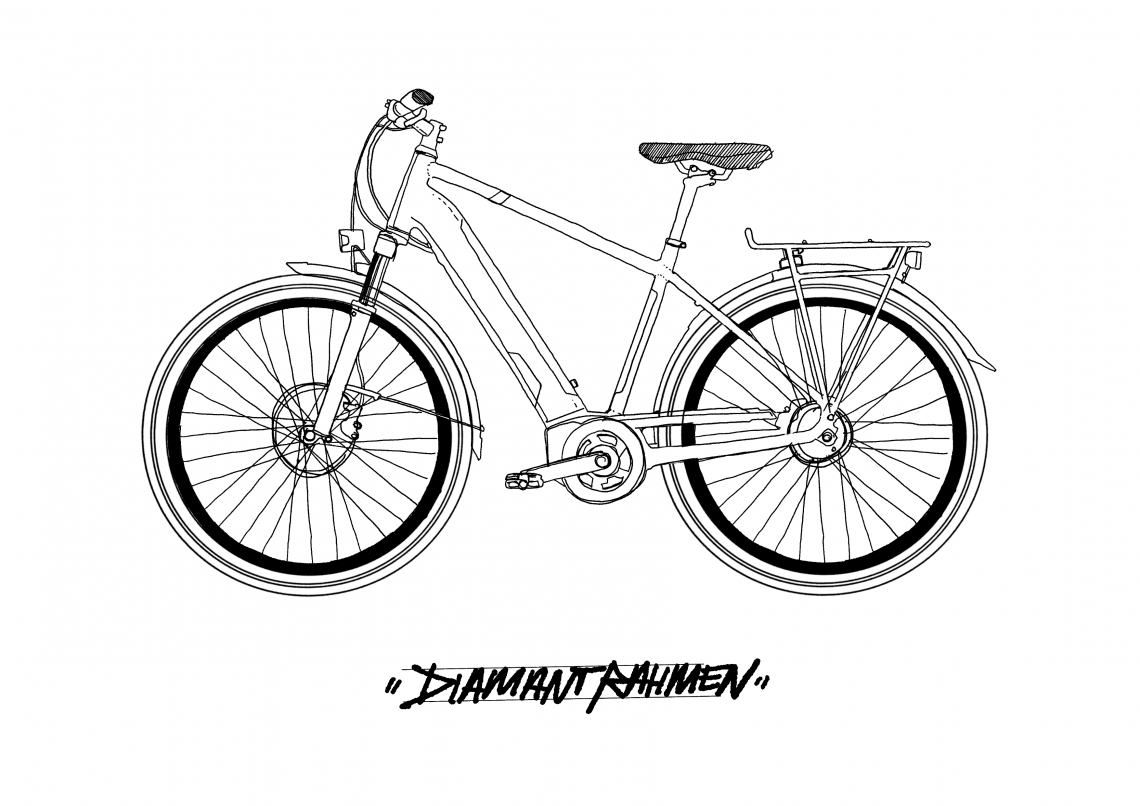
The diamond frame is the most widespread design: front triangle, rear triangle and the seat tube connecting the two in the middle. To this day, this remains the most widely used concept as it offers a perfect mix of performance, efficiency and manufacturing complexity. Ebikes with diamond frames are true masters of transformation and today numerous concepts are ranging from fully-integrated stylers to Bosch brawlers with front and rear racks.
At traffic lights, the high frame tends to get in the way of sensitive body parts, which is why bike manufacturers use sloping top tubes to provide more freedom of movement and comfort. Nevertheless, on the whole, they are mainly recommended for larger bike fans and in the past have been dubbed the bike for real men. Bullshit. Diamonds are everybody’s darling, right?
An ebike design for men and women? Trapeze frames are unisex
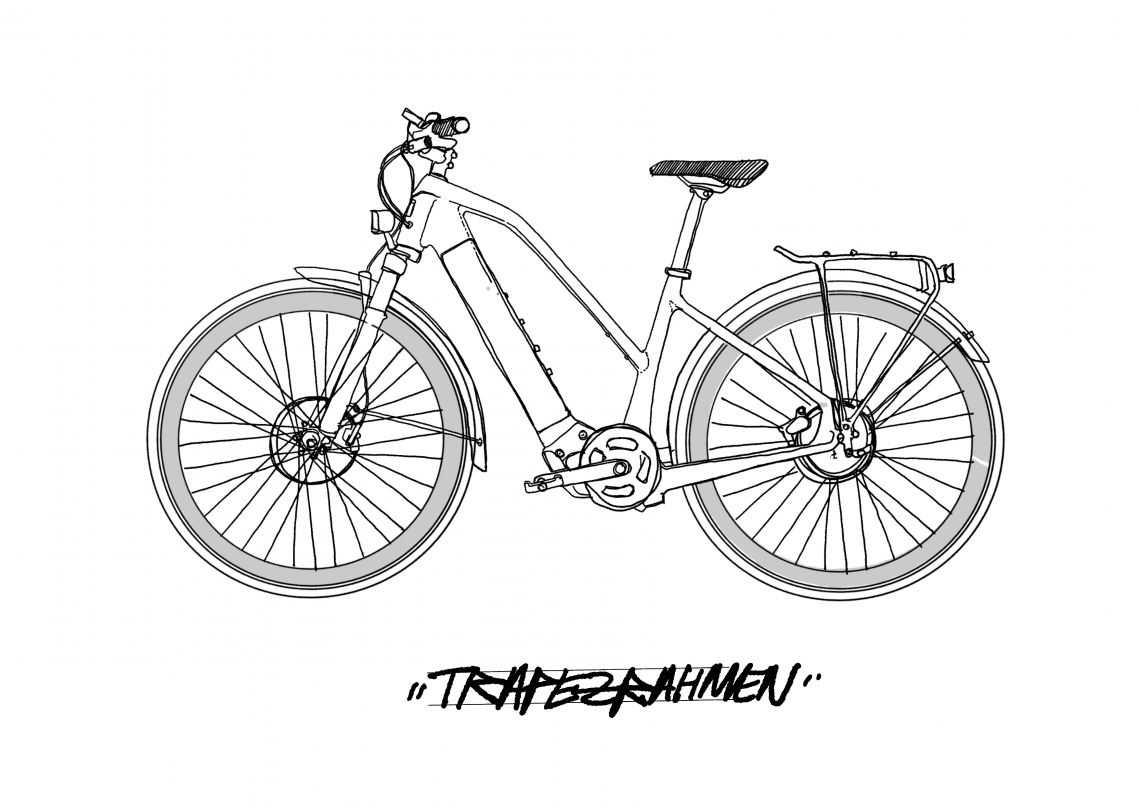
By definition, products that are equally suitable for women and men are designated unisex. Quite a statement in the 21st century. What’s usually behind this are bikes with a trapeze frame. They strike a balance between the step-through and diamond frames, offering a Goldilocks standard with characteristics from both approaches.
The top tube is low-slung, making it much easier to get on the bike with a reduced standover height. In everyday life, this means less stress at traffic lights and tends to increase comfort and confidence for beginners.
Far more than just an ebike for ladies – Step-through ebikes also make sense for men!

The times when bicycles with a step-through section were referred to disdainfully as women’s ebikes are over! Newcomers of all ages and genders can benefit from the upright seating position, the increased sense of safety and easy mounting and dismounting. They are true bringers of joy and enable riders of different skill levels to experience the fascination of biking together.
If you don’t want to do without the best mode of transport in the world despite injury, limited physical flexibility, older age or disability, a step-through ebike is the right choice. Of course, you can also own a step-through bike if you want to celebrate the unconventional look or simply enjoy trying something new. For lazy couch potatoes who don’t want to lift their leg over the top tube, what a feat of strength, this new generation of ebikes is also just the thing! If you’re looking for an ebike with good control in moderate terrain, on extended tours and in everyday life, then a good step-through bike is the answer to all your needs. Our sister magazine E-MOUNTAINBIKE has tested the most exciting off-road step-through bikes and you can find the in-depth group test here.

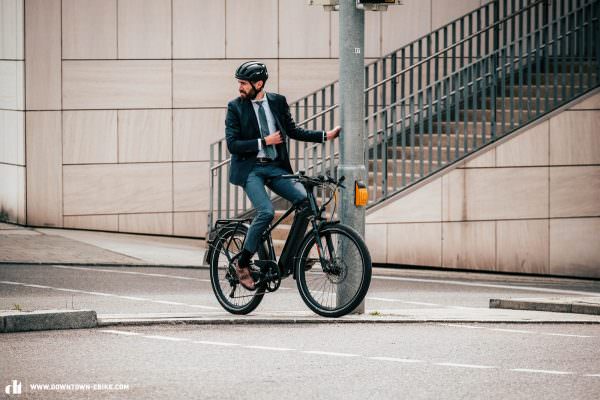

The ultimate ebike test and its candidates – Our test field
For this ebike group test, we deliberately included a diverse range of test bikes in order to be able to explore their different areas of use, type-specific features and the general possibilities offered by the individual concepts, in order to draw a holistic picture of the offerings available. So this time, we start where other group tests and tech discussions have left off previously. Of course, there are models here that are more suitable for certain types of ebikers in everyday life than others. We have selected the 18 most promising quality ebike concepts and added a non-motorised everyday specialist, the Brompton folding bike. Why the apparently wild mix?

To understand the details and differences of the individual bike concepts, you have to see them in the bigger context of the ebike cosmos. The questions about the best bike with 20″ tires or the best ebike with a Bosch motor and 85 Nm torque have always been the wrong ones. Unless of course you want to play car top trumps and outdo your opponent with more horsepower, instead of actually going out on the race track and quickly realising that there’s much more to it than raw motor power and specs. For this reason, we’ve always defined the scope of our group tests more broadly and don’t look for the best in a given category. We don’t want to play top trumps or look for the best apple. We want the best fruit. ]
If you’re looking for the best fruit, you won’t be satisfied with just comparing apples.

If you want to eat more healthily, you don’t compare 30,000 apple varieties. You look at which fruit provides the most nutrients and vitamins and, perhaps more importantly, which tastes the best. It’s no longer just apples. A pear is just as valid an option as an orange, a mango or maybe even a banana. And that’s how we approach it with this group test. Not all ebikes are the same and your requirements are a colourful bouquet of individual demands. So if you’re looking for the most ebike riding fun, you shouldn’t limit yourself to considering just one type of bike right from the start. So dig into the fruit bowl! Here’s an overview of all the test bikes competing for the title of best everyday ebike!
| Bike | Price | weight in kg | Motor | Battery capacity in Wh |
|---|---|---|---|---|
| Ampler Stout (Click for review) | € 2,490.00 | 16.80 | Ampler | 336 |
| Brompton M6L (Click for review) | € 1,785.00 | 12.60 | your own legs | ∞ |
| Cannondale Topstone Neo Carbon Lefty LE (Click for review) | € 9,999.00 | 17.50 | Bosch Performance Line CX | 500 |
| Canyon Commuter:ON 7 (Click for review) | € 3,299.00 | 17.90 | FAZUA Ride 50 Evation | 252 |
| Diamant Juna Deluxe+ (Click for review) | € 3,099.00 | 26.12 | Bosch Active Line Plus | 500 |
| FEDDZ E-Moped (Click for review) | € 7,999.00 | 47.00 | FEDDZ Model P301 | 1900 |
| FLYER Upstreet6 7.10 HS (Click for review) | € 5,099.00 | 32.24 | TDCM HCA45 | 810 |
| Haibike Trekking 9 (Click for review) | € 3,899.00 | 26.20 | Bosch Performance Line CX | 625 |
| Kalkhoff Endeavour 5.B Excite+ (Click for review) | € 3,899.00 | 26.64 | Bosch Performance Line | 625 |
| MERIDA eBIG.TOUR 700 EQ (Click for review) | € 4,299.00 | 24.74 | Shimano EP8 | 630 |
| MERIDA eONE SIXTY 10K (Click for review) | e 9,899.00 | 22,96 | Shimano EP8 | 630 |
| Moustache Samedi 27 Xroad FS 7 (Click for review) | € 5,399.00 | 26.50/t | Bosch Performance Line CX | 625 |
| Movea Modo 20” (Click for review) | € 3,697.00 | 16.04 | Zehus 2nd Generation | 160 |
| Riese & Müller Homage GT Rohloff HS (Click for review) | € 10,048.40 | 35.50 | Bosch Performance Line Speed | 1250* |
| Riese & Müller Packster 70 Vario (Click for review) | € 9,548.20 | 63.20 | Bosch Cargo Line Cruise | 1250* |
| Riese & Müller Roadster Touring (Click for review) | € 4,368.80 | 23.80 | Bosch Performance Line CX | 625 |
| Schindelhauer Arthur VI/IX (Click for review) | € 4,695.00 | 16.02 | Ebikemotion X35+ | 250 |
| Specialized Turbo Vado SL 5.0 EQ (Click for review) | € 4,599.00 | 16.56 | Specialized SL 1.1 | 320 |
| VanMoof X3 (Click for review) | € 1,998.00 | 21.04 | VanMoof | 504 |
| Ø | € 5,269.44 | 23.50 |
| Mini | A small battery means less weight. Movea take this credo to the extreme and use a 160 Wh battery with the smallest capacity in the entire group test. The Specialized SL 1.1 motor comes with a 320 Wh battery. The MAHLE Ebikemotion and FAZUA, with 250 and 252 Wh respectively, sit in between. |
| Standard | … is an internal or external battery with a 500 to 750 Wh capacity. |
| Maxi | The FEDDZ E-moped leaves the batteries of the competition green with envy with its fabulous 1,900 Wh capacity. At the same time, there’s nothing happening here without a battery and its consumption is the highest. |
| Modular | The main battery can be expanded with an additional battery. With the Bosch DualBattery system, you can have up to 1,250 Wh on tap. Modular systems are also available for Shimano motors, but only from third-party manufacturers. Specialized also offer a super-compact 160 Wh range extender for the SL 1.1, which slots into the bottle cage. MAHLE Ebikemotion also offer an additional battery with a 208 Wh capacity. |
The mother of all questions: “How far can I get on my ebike on one battery charge?”
Not just a question of the battery – The range of ebikes
Who really believes that the consumption figures quoted by the automotive industry actually reflect reality? Anyone who answered, “Me!” need not waste any more time here. For everyone else, the fuel consumption figures of the automotive industry are significantly more accurate than any range measurement of an ebike. Why? Because the human factor plays a much greater role for ebikes.



Of course, a large battery can provide more energy to the motor and deliver increased range. But it’s important to note that range doesn’t just depend on the size of your tank! The power consumption, efficiency and performance of your motor, along with roughly 20 other external factors are also decisive. That includes the way you ride, the rider’s weight and the distance ridden above the 25 or 45 km/h limit. As such, it’s not possible to make a general statement about the range or vertical ascent possible. You can read more about this in our sister magazine E-MOUNTAINBIKE in The truth about lab tests” (read it here).

How loud are ebike motors?
The motor noise also influences the riding experience and riding pleasure on the ebike. A quiet system is more pleasant to live with and can enhance the natural feeling of the motor. In addition to the whirring of the motor itself, other noises also become apparent. For example, the FAZUA motor has a coarsely stepped freewheel and is clearly audible when it engages. There are often variations between identical motors, meaning that the same model in the same frame can sound different. The metallic clacking from inside the Bosch and Shimano motors is very apparent in some bikes and less perceptible in others.
On top of that, the design of the frame also has a considerable influence and can amplify noise. A motor that hums unobtrusively in the background in one bike can be unpleasantly loud in another ebike frame.

Chapter IV Which ebike is right for me, or which ebiker type am I?
First of all, you should think about where the new ebike will be used. What type of rider are you, what requirements are covered with your existing transport options and what do you need when it comes to the new bike? In theory, you might be able to do everything with just one ebike but different bikes play to their strengths in different areas and applications.
Below, we discuss five different ebiker types. Our aim in making these categorisations is not to pigeonhole certain users and specific models. If in any doubt, the exception proves the rule and in the real world, mixed types undoubtedly exist. However, these distinctions should help you figure out which ebike fits which set of needs.

The trans-urban mile muncher
… or the regular long-distance commuters. Your usual commuting distance is more than 15 km each way and you use your bike every day. Your ebike is used as a means of transport and is a real alternative to a second car or public transport. Practicality, reliability and utility win out over the ultimate bling factor because it’s primarily a functional machine
| Important | Unimportant |
|---|---|
Motor & battery
|
Look
|
Handling
|
Price
|
Spec
|
Parking
|
Comfort
|

The stylish city explorer
This type of ebike unites experts and early adopters from both the fashion and tech scenes. As hip trendsetters, they know exactly how to ride with style. Sci-fi, hi-fi, Wi-Fi – they know exactly what they’re talking about and can easily play the keyboard while half asleep. With a tendency to live out their passions eccentrically, emotional decisions come before rational ones.
| Important | Unimportant |
|---|---|
Look
|
Handling
|
Handling
|
Cargo
|
Connectivity
|
Comfort
|
Motor & battery
|

The transporter
Take the kids to kindergarten, head to the weekly market and later get a crate of beer – no problem for this type of ebike, even without a car. These riders love to combine things: rational and emotional motives go hand in hand because investments are made on the basis of knowing what they want and getting a suitable vehicle that suits their vision and mission.
| Important | Unimportant |
|---|---|
Cargo
|
Connectivity
|
Motor & battery
|
Acceleration & speed
|
Spec
|
Look
|
Handling
|
|
Comfotz
|

The short distance whizz
You live in a 15-minute city like Paris. This means that all your daily needs are within a 15-minute radius by foot or ebike. For short distances of less than 2 km, you aren’t afraid to simply walk. For medium distances of up to 10 km, you get on your bike. Longer distances are easily covered with a mix of public transport and your bike. Short-distance bikers are active/sporty people who never want to commit to one thing, maintain a flexible lifestyle and like to be inspired by impulses. Due to limited space in the city, they often don’t have a car and if they do, it is mainly used for pleasure.
| Important | Unimportant |
|---|---|
Handling
|
Cargo
|
Handling
|
Motor & battery
|
Spec
|
Comfort
|
Connectivity
|

The passionate/recreational cyclist
You have significant biking experience and enjoy riding sportily. This group encompasses mountain bikers and trail shredders, road bike fans and Strava heroes, as well as touring fans who enjoy (rural) excursions into the countryside outside the city. You change into sports gear for your daily commute before showering when you get there because you enjoy working on your fitness. Your bike is used for commuting during the week as well as for tours at the weekend and is a means of transport and sports equipment all in one.
| Important | Unimportant |
|---|---|
Handling
|
Cargo
|
Connectivity
|
Parking
|
Motor & battery
|
|
Comfort
|

What’s important when buying an ebike? The most important criteria for our test
Ruts, cobblestones, kerbs, dirt and forest roads mixed with sun, rain and wind instead of lab coats and air conditioning: our test is based on real-world experience rather than specs printed on paper. There are numerous things to consider before making a purchase and we wanted to make sure you’re aware of what you need to look out for. So how did we test the ebikes?
Only once we were on the bike could we form a comprehensive idea of the ebikes and gather well-founded insights from practical experience. This doesn’t involve an inflexible testing protocol or giving the tires a kick like at a used car dealer, but finding out first-hand in real-world use which features and components are important and which serve no function at all. We tried everything out. In the process, we went beyond the designations specified by the manufacturers and pushed the test bikes outside their comfort zones. This helped us develop the criteria for our group test, the most important of which we’ve summarised below.
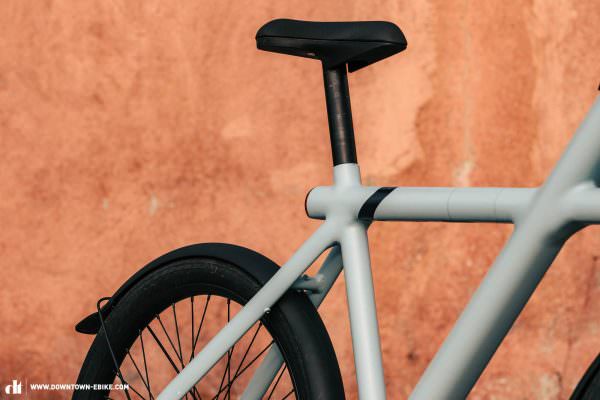


Specs, look and finish – The first impression
Love at first sight or a long-term relationship and bond for life? We doubt that even Shakespeare would be able to put the feeling of New Bike Day into words when you pull your new ebike out of the box or roll it off the shop floor. At the very least, we can leave you anticipating the moment and save you from any unpleasant surprises. Initially, we look in detail at the build quality of the ebike, its spec and looks. A picture is worth a thousand words but it still can’t convey actually meeting a bike in person. Does it enchant you with its retro charm or does it tend towards a more futuristic look? The lines of the frame, neat cable routing, tidy paintwork and the overall finishing quality all contribute to the sex appeal of an ebike and we wouldn’t want you to miss out on that experience. Has there been a focus on integrating the components and making sure they harmonise with the bike or does the full-featured spec make the bike look busy and untidy? It’s crucial not to blindly bolt together as many features as possible but to create a coherent overall package that is adapted to your needs.


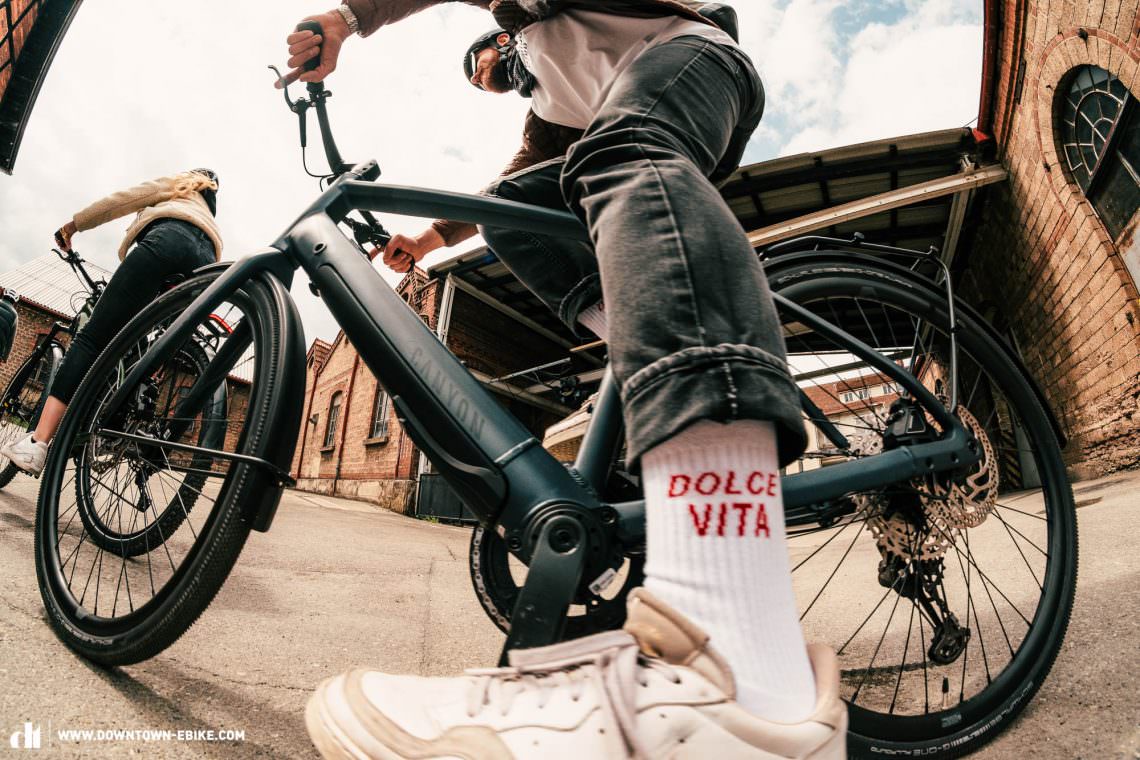
We asked ourselves some questions that you should also be able to answer. What does my everyday life look like? Do the components fit my everyday life and how could they make life easier? Do you notice any missing features that might complicate daily use or are clever solutions provided that will prove to be indispensable? Do the components hold the bike back or do they expand the range of applications beyond what was originally intended? A set of treaded tyres can look good on both gravel and asphalt. A dropper post helps with comfortable mounting and dismounting but can also mean more freedom of movement on the trail and allows the ebike to be quickly adjusted to the height of another person. What about adjustability in general? Can the height and angle of the cockpit and saddle be easily changed or are they fixed and suited to just one rider. Not every owner is the sole user of an ebike and not everyone uses it in the same way. We wanted to know how versatile the bikes are and whether they can cut a good figure everywhere. It’s not enough to tick off just one item on a spec list. For example, a light is essential to be seen but is it also useful on forest paths at night, so that you can illuminate the way ahead and not miss the turn-off. Even if you prefer to use public transport in bad weather, rain or puddles can always take you by surprise. Do the mudguards keep muck off you or are they too short and leave you exposed on the bike?

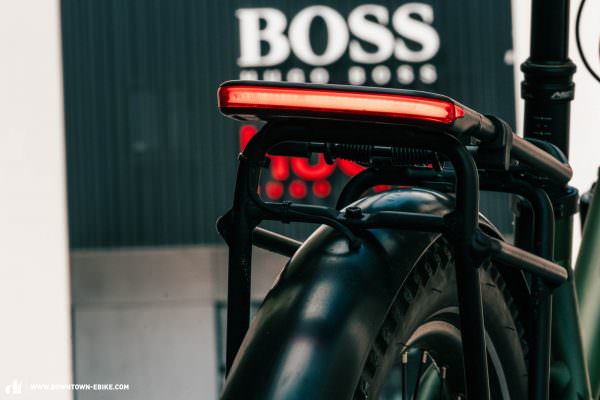


Room to dream – What is the transport concept of the ebike?
Additional cargo can sometimes drag you down, especially if you have to carry it on your body. That’s why the transport concept of the ebike should fit your intended use. Whether luggage rack, cargo box or trailer, we have tested how and where you can safely stow luggage on an ebike. But when loaded, it’s important to consider how the ebike deals with the additional weight. Does it weave from side to side under the additional load or does it hold its course completely unimpressed? Which bags and standards do ebikes support? We also considered compatibility with a child seat and, unfortunately, all too often came away disappointed. When it comes to carrying additional luggage it’s important not to lose sight of the maximum permissible total weight. The weight capacity varies greatly amongst the test bikes, which can quickly become an issue depending on your weight and luggage since many ebikes already take a decent chunk out of the maximum load with their own heft.

Good with people? How does the ebike handle
Ideally, we would like to have an ebike that is big enough to live in and small enough to carry in our pocket. The handling of a bike has a big impact on everyday life. Do the dimensions and weight let you take it with you on public transport or do you have to steer clear of every staircase and lift? Not all of us have a ground-level, secure and weather-protected location to store our bikes. Can we carry the bike up to the top floor flat or can it be left outside overnight without worry? Anti-theft features play an important role. Does the ebike already have an integrated lock, alarm or tracking device, or do you have to lug around a heavy lock just because your ebike can’t take care of itself for five minutes while you go to the bakery to get bread? And at what intervals do you have to maintain your ebike, care for it and replace parts so that you can enjoy it for a long time? In the test, belt drives competed against chains and hub gears against derailleurs. These options offer significant differences as regards wear and maintenance. Service intervals should also be observed for suspension elements. Due to its design, a full-suspension ebike has significantly more bearings that need to be serviced and every suspension fork will need to be serviced sooner or later. The maintenance interval and scope of work required can vary greatly from bike to bike. Unfortunately, we can’t address the topic of durability in our group test of 19 ebikes. For that, we would have to ride thousands of kilometres with each bike, which sounds tempting but you’d probably have to wait another 2 years to read this test.


Motor, battery and more – Is power all that counts?
The motor in some ebikes can provide a great deal of fun, but it’s not about the motor alone. Many people have a fixed idea of, “I want an ebike with a motor from XY because they are the best.” But that’s too short-sighted. It is much more important whether the motor concept and the system fit the bike and its intended use. It doesn’t matter to us whether it’s a mid-mounted motor or a hub motor in the front or rear wheel. We are interested in whether the motor concept is powerful enough to cope with everyday tasks while being intuitive and user-friendly enough for ebike newcomers. The overall handling, not just the power and torque of the motor, play a crucial role. We examined how the ebike behaves when setting off, how it gets up to the assistance speed limit and how it handles above this threshold, where you only move under your own steam. The behaviour of the motor on ascents, when cadence usually decreases, was also a key focus. In addition to the motor concept, the battery concept must also be considered. While economical motors achieve long ranges with less support, powerful units can quickly drain large batteries in turbo mode. What compromise between performance and range have the manufacturers settled on? With a battery completely drained, the next consideration quickly became clear. How does the charging process work? Are the charging ports easily accessible, can the battery be charged outside the ebike or is it permanently installed in the frame? These are all important aspects that you should think about before buying.


The display is another important component of any E-system. Most ebikes in the test display the current motor assistance level, speed, battery charge and other relevant data in some form. Usually, this is done via a display. On top of the looks, we examined the ergonomics and positioning. Some displays have buttons e.g. for the lights, which have to be used while riding. How good is the legibility in the dark and in direct sunlight? Are all relevant motor and ebike data displayed and are they presented in a meaningful way? Some manufacturers in the test only use minimalist displays, or do without them altogether and use simple LEDs instead. We took a close look at how well different concepts work.
Last but not least, motor remote ergonomics play a major role. Is the handlebar remote easily accessible and easy to operate? Not all ebikes use a remote, so it’s important to establish whether the motor can be adjusted while riding and how easy this is to do. Is it possible to tune the motor easily or do manufacturers exclude any customisation? We didn’t stick to just one drive system concept in the test and were thus able to test a wide range of approaches. If you want to find the right ebike for you, you should follow our example and test as many as you can.

Well connected or no reception again? Connectivity
Nowadays, the riding experience on modern ebikes isn’t just shaped by the hardware alone. Software plays an increasingly important role. For example, almost every ebike in the test has a companion app that provides a link between the ebike and your smartphone. In some cases, these are just token apps that don’t provide any useful functionality and just mirror the display on your smartphone.

In other cases, an ebike’s full potential can only be tapped into via the app. We found out which functions are there, whether they bring real added value and how intuitive the operation of the app is. With a smartphone on your ebike, you always have a navigation device at hand in your pocket or backpack. How well can the ebike make use of these capabilities and, for example, output your phone’s navigation commands on the display? Or is the ebike’s on-board computer already so well equipped that it can take over all these functions itself? In addition to navigation, some ebikes in the test also use tracking features as theft protection. Some of the bikes can be deactivated, rendering them relatively useless for thieves. For us, it was important to know which ebikes make sensible use of 21st-century technology and which still require you to fight off the bad guy with a stick.
In addition, most ebikes already have a variety of sensors such as speed, cadence and power meters integrated into the motor. We looked at whether this data is only used by the motor controller or whether it is also available to view by the rider. Can outings be recorded for sport-savvy bikers and can they be uploaded to sites such as Strava?
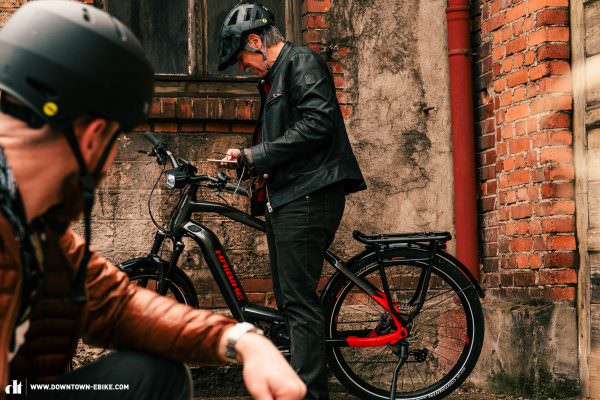

Barely got round the corner – Handling
Unfortunately, many customers are lured in by stats and components on the spec sheet and are persuaded to buy a bike that is unsuitable for them. Then they end up overwhelmed by their new bike and, despite plenty of trial and error, can’t find a comfortable riding position. We constantly meet people who commute through the cities on their bikes in unnatural positions. When buying a bike, you should always find out in advance what kind of horse you are getting on: an impetuous rodeo stallion or a tame petting zoo pony? Riding safety also became a top priority in the test. Does the ebike have powerful brakes for its intended use? Is the grip of the tyres sufficient and does this extend to wet roads when cornering? How does the bike behave when riding over kerbs and rail tracks? Does it simply roll over such obstacles or does the ebike get caught on small edges and obstacles? A balanced weight distribution makes a positive impact on handling and can provide more confidence and a better sense of safety on the bike.


If you regularly spend a lot of time in the saddle, it’s crucial to get a comfortable bike. Does it have suspension elements such as a suspension fork or a rear shock? How do they affect the riding comfort? Some ebikes rely on a suspension seat post, extra-wide tyres or the damping properties of the frame instead of a suspension fork and shock. In the test, we wanted to know whether this offers enough comfort on uneven surfaces or whether it’s better to stay on asphalt. While some people can no longer imagine an ebike without suspension forks, some test bikes with rigid forks were more comfortable overall than their suspended counterparts.
The level of noise while riding also plays a role in the experience. What are the sources of noise? Are there rattling cables, mudguards or a rattling chain and how loud is the motor? The riding position is also crucial for comfort. Do you tend to sit relaxed and upright on the bike, with little pressure on the wrists and can you go on long tours in this position? Or do you lean far forward over the handlebars to pedal at full power on a sporty ride, leaving you to do more work with your arms and upper body? Not every ebike in the test tries to completely filter out feedback from the ground but instead ups the riding fun with a sporty and direct character. This also has a decisive influence on the intended use of the ebike.

While the smooth-running and comfortable ebikes in the test were better suited to long tours, the agile ebikes with a sporty position could also be used as fitness equipment for fast sprints through the city. In order to assess the character of the ebikes correctly, we tested handling at slow speeds in narrow streets and at high speed with fast changes of direction. Is the ebike agile enough to manoeuvre across tracks at level crossings and at the same time smooth enough at high speeds that you don’t have to hold on for dear life? Not every manufacturer succeeds in finding a good compromise and so the range extends from beginner-friendly ebikes on which even grandparents can happily do their shopping to ebikes with demanding or even risky handling for inexperienced riders.

Chapter V Which is the best ebike of 2021?
Even if there are claims that a jack of all trades is always a master of none, we disagree. At least in the world of ebikes. But let’s take things one step at a time.
Even though the needs of individual riders are highly diverse, there are clear winners and losers in our group test. Often it is the small details such as cleverly chosen components, successful integration, pragmatic solutions and first-class workmanship that make the big difference. However, sometimes it’s fundamental features and characteristics like construction, innovative connectivity technologies and weight distribution. Here you can find all the tops and flops from our big ebike group test.
Highlights of the test – Our absolute tops

Thanks to the COBI.Bike app, the Riese & Müller Roadster has a navigation system with voice output and many connectivity features. Even your playlist can be controlled via the handlebar remote.

With VanMoof, the standard of integration is at the highest level. Many in-house components are used, including the handlebars, grips and brakes and controls, resulting in a clean and consistent look.
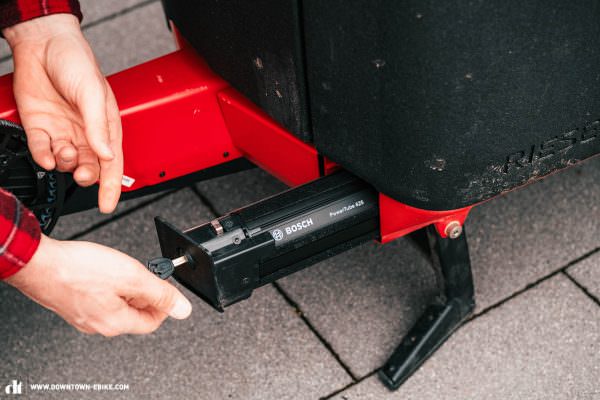
The two lockable 625 Wh Bosch PowerTube batteries are perfectly integrated into the frame of the Riese & Müller Packster and, in addition to a long range, ensure a low centre of gravity.

The LightSKIN system in the seat post of the Ampler Stout is functional and has a stylish design. There’s no better way to be seen! Sadly, apart from the Schindelhauer, it isn’t installed on any other test bike.

Four-piston brakes front and rear are a good choice on an ebike like the Kalkhoff, with its maximum permissible weight of 170 kg, the third-highest in the test. We like it!

Thanks to the clever pulley on the Riese & Müller Homage GT Rohloff HS, the belt doesn’t enclose the chainstay, saving Riese & Müller from having to design a frame splitter for the beefy frame.

The combination of a Pinion gearbox and GATES belt drive on the Schindelhauer Arthur VI/IX is almost completely maintenance-free, but the Brooks leather saddle requires some looking after.

The Moustache Magic Grip Control damper provides a lot of comfort and grip from the rear wheel.
Wo Licht ist, ist auch Schatten – Die diesjährigen E-Bike-Flops

The MAGURA two-piston brakes with 180 mm brake discs on the FEDDZ E-moped gave us pause for thought. Many significantly lighter and slower bikes in the test were equipped with more capable stoppers.

The bike stand matches the Movea Modo 20”’s design but doesn’t hold the bike up securely – especially not with luggage in the front rack.

The Shimano remote on the MERIDA eBIG.TOUR 700 EQ is a complete disappointment, creaking during operation and providing no haptic feedback whatsoever. It doesn’t do justice to the high-quality Shimano EP8 motor.

People with big feet might have problems pedalling the Riese & Müller Packster and brush against the box with their toes. Too bad about the lovely and otherwise extremely practical box!

Bottle cage mounts are super practical! Unfortunately, you’ll be looking for them in vain on the Kalkhoff Endeavour frame. Apart from the two mounts on the underside of the top tube for a lock or other equipment, the frame triangle is stingy on mounting options.

The Lezyne light system, as found on the MERIDA eONE-SIXTY 10K, has a mediocre light output. In order not to disappear amongst the city lights at night and to fully illuminate the way ahead, a more powerful beam would be necessary.
Best in Test 2021: Moustache Samedi 27 Xroad FS 7

26.5 kg (size L) | € 5,399.00 | Manufacturer-website
In a spectacular showdown of ebike concepts, the Moustache Samedi 27 Xroad FS 7 prevailed and took the victory after a direct competition with 19 other top-end options. No other bike was able to shine in so many everyday disciplines as the full-suspension bike from the French ebike specialists. A comfortable chassis and the Bosch power in combination with the outstanding Bosch Nyon display with its built-in navigation system enriches every ride with the Moustache. The extensive spec has only minimal weaknesses and the overall concept provides a perfect balance of suitability for everyday use and riding fun. We can recommend this ebike to everyone. Congratulations to the Moustache Samedi 27 Xroad FS 7 – the Best in Test of 2021!
This way for thereview of the Moustache Samedi 27
Best Buy 2021: VanMoof X3

30.58 kg (size L) | | Manufacturer-website
The VanMoof X3 is an innovative ebike and its overall concept, choice of components and integration of its technological features are trendsetting for the bicycle industry. The unconventionally designed bike is perfectly tuned for inner-city use, on flat terrain and for short distances. Although there are bikes in the test field that do significantly better on long-distance or touring rides, using this bike is an outstanding experience with so much fun and enjoyment that our testers unanimously gave the VanMoof the Best Buy award. Thanks to its numerous connectivity features and competitive price, it also offers unbeatable value for money and can fit into even the smallest flat. An innovative everyday all-rounder for the city, whose concept is guaranteed to set a precedent? Oh yes!
Click here for thereview of the VanMoof X3
The unfortunate loser of the group test: FLYER Upstreet6 7.10 HS

32.24 (size L) | € 5,099.00 | Manufacturer-website
Where there’s light, there’s also shadow. Unfortunately, that’s the case with the FLYER Upstreet6 7.10 HS. While it wants to find favour with long-distance fans with a large battery and support up to a speed of 45 km/h, the concept makes numerous mistakes compared to the competition and only really shines on the flats and good surfaces. However, on hilly terrain, the S-pedelec quickly runs out of steam and goes almost completely on strike on hills. In addition, it is difficult to push or manhandle, while the cable routing at the front is chaotic. The technical and visual integration also leaves a lot to be desired, meaning that the FLYER slips to the bottom of the field in this test.
The testfield
All Bikes in this group test: Ampler Stout (Click for review) | Brompton M6L Cloud Blue (Click for review) | Cannondale Topstone Neo Carbon Lefty LE (Click for review) | Canyon Commuter:ON 7 (Click for review) | Diamant Juna Deluxe+ (Click for review) | FEDDZ E-Moped (Click for review) | FLYER Upstreet6 7.10 HS (Click for review) | Haibike Trekking 9 (Click for review) | Kalkhoff Endeavour 5.B Excite+ (Click for review) | MERIDA eBIG.TOUR 700 EQ (Click for review) | MERIDA eONE SIXTY 10K (Click for review) | Moustache Samedi 27 Xroad FS 7 (Click for review) | Movea Modo 20” (Click for review) | Riese & Müller Homage GT Rohloff HS mit DualBattery (Click for review) | Riese & Müller Packster 70 Vario (Click for review) | Riese & Müller Roadster Touring (Click for review) | Schindelhauer Arthur VI/IX (Click for review) | Specialized Turbo Vado SL 5.0 EQ (Click for review) | VanMoof X3 (Click for review)
Words: Benjamin Topf, Rudolf Fischer, Robin Schmitt, Felix Stix, Philipp Schwab Photos: Valentin Rühl, Benjamin Topf, Philipp Schwab, Marius Burghard (illustrations)



